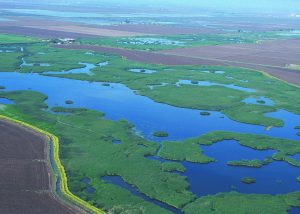The situation at Oroville Dam garnered national attention and brought into clear focus the limitations of our aging flood protection infrastructure – California’s complex system of dams, levees, and bypasses – as well as the need for greater investment in maintaining and upgrading this system.
It is appropriate, then, that Governor Brown recently unveiled a plan to bolster dam safety and flood protection. By requiring emergency action plans, beefing up our dam inspection program and increasing our investment in emergency response, Governor Brown is taking an important first-step in tackling this difficult problem.
This comes at an especially important time as infrastructure maintenance is at the forefront of state and national discussions, and we still have a few months to go before we are out of the rainy season.
A drop in the bucket
To pay for his plan, the governor is proposing a $437 million down payment from the general fund and Proposition 1. At the same time, Senator de Leon has offered a proposal (SB 5) to invest $500 million in flood protection and infrastructure repair.
This is a good starting point, but it’s clear that more funding is needed to address the state’s known infrastructure needs. In fact, in a 2013 report, the Department of Water Resources and U.S. Army Corps of Engineers identified an “immediate need for more than $50 billion to complete flood management improvements and projects.”
So how will California address this serious funding gap?
Federal investment and participation in dam inspections will be a key part of the solution. The $1 trillion infrastructure package touted by the Trump Administration, importantly, must include funding for water infrastructure and not exclusively focus on roads and bridges.
[Tweet “What it’s going to take to fund California’s water infrastructure, via @GrowingReturnshttps://edf.org/7dZ”]
New solutions are needed
But California can’t wait for the federal government to meet this urgent need. Nor should we depend on intermittent bond funding to address something so critical to our state’s people and economy.
A stable, consistent source of funding is needed to support ongoing infrastructure maintenance and upkeep as well as mitigating the impacts that infrastructure has had on the environment. Luckily discussions about regular, long-term funding have started at the local and state level, with the governor even alluding to this during his announcement last week – “The Administration will continue to work with the Legislature through the budget process on solutions.”
Taking care of the whole system
Critically, we must also utilize and enhance our natural infrastructure to reduce the strain on our water system.
This means investing in forest management to provide a clean and reliable water supply, setting back levees to give floodwaters more space to spread out and maximizing opportunities to recharge groundwater aquifers so that we are better prepared for the next, inevitable drought.
Stable funding and better use of our natural infrastructure will provide enhanced protection for California communities while also supporting our economy, environment and high quality of life.
As Secretary of the California Natural Resources Agency, John Laird stated during a hearing in front of the Senate Committee on Environment and Public Works on Wednesday, “We must not simply view infrastructure through the lens of single purpose, single function undertakings, but instead should use the opportunity to fund innovative projects that leverage science to meet the challenge of extreme weather and variable precipitation, and accomplish multiple benefits and goals with the investment.”
Related:
Why one wet winter won’t solve California’s water problems >>
What the Oroville Dam crisis tells us about natural infrastructure >>











